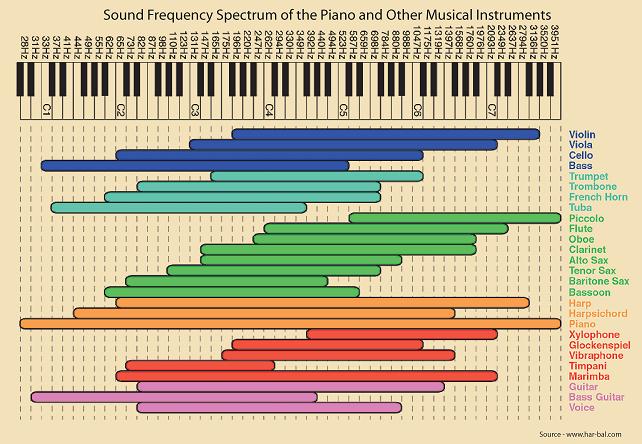Ultrasonics is generally described as the technology of sound above the range of human hearing. The use of the term “sound,” however, is questionable since “sound” would imply something we (humans) can hear. It all comes down to the question asking, “If a tree falls in a forest and there is no one there to hear it, is there sound?” This question has provided fodder for endless discussions between my wife and me on long, boring road trips (she says NO and I say YES!). So that we can keep the discussion here brief, we’ll talk about mechanical vibrations instead of “sound.”
Mechanical vibrations in matter on earth range in frequency from below .01 Hz (1/100 of a cycle per second) up to several mHz (one megahertz equals 1,000,000 cycles per second). The lower limit is established by the longest travel path in which a single wavelength of vibration can be established. Examples of these super-low frequencies are those made by volcanoes, thunder, ocean waves and the vibration of the earth itself. These frequencies, if they are perceptible to humans at all, are “felt” rather than “heard.” No one will argue that humans can feel the motion of an earthquake but the basic frequency is way below the frequency that our ears can detect and is often referred to as “sub sonic.” The sub sonic vibrations created by an earthquake echo around within the earth and can be detected by seismographs. Even lower vibrational frequencies occur outside of our world. Mechanical vibrations have been detected in our sun which, being much larger than earth, will support a longer vibrational path and is, therefore, capable of lower frequencies. The sun, in effect, is a bigger “bell.”
On the high end of the scale, vibrations eventually reach a point where the wavelength is shorter in dimension than the atomic or molecular spacing of the medium conducting the vibrations. When this occurs, it is not possible for vibration to be transmitted from one atom or molecule to the next. If vibration can not be transmitted from one atom or molecule to the next, the vibration can not propagate and remains as a single vibrating atom or molecule. It is well known that vibration of single atoms and molecules exists. These vibrations occur at very precise frequencies and are used to regulate atomic clocks and the transmission frequencies of radio waves. Vibrations on the high end of the scale also include those made by several animals including bats and dolphins. Higher frequency vibrations are required for a bat’s echolocation capability to be effective in detecting small insects. Vibrations at lower frequencies would pass right by a small target without producing an echo. The ability of high frequency vibrations to produce echos from small targets is also key to the success of ultrasonic imaging for medical purposes and for devices used to detect flaws in metals and other materials.
The frequency of “sound” as we know it (audible vibrations) is from just a little under 18 Hz to nearly 20 kHz (20,000 cycles per second). These upper and lower limits are not perfectly defined and vary considerably depending on a person’s gender and age along with several other factors including long term exposure to high-intensity sounds. Long term exposure to high intensity vibration within the human range of hearing (yes, like rock bands) is known to result in a decrease of the ear’s ability to hear sounds. Vibrations below the range of hearing may be detected by humans as pressure pulses but are so slow that it is not possible to assign them a “tone.” The following chart shows the frequency range of various musical instruments and the human voice.

As you can see, the pure tone range of the human voice is from about 80 Hz to less than 1 kHz. The human voice is, however, also comprised of overtones and harmonics which reach beyond these limits. I have always found it surprising that the pure tone range of the human voice and musical instruments encompasses such a small portion of the human spectrum of hearing. This is especially true on the high end. The highest frequency piano note is still way below the limit of the frequencies that most humans can hear. Yet, a person’s loss of the ability to hear frequencies substantially outside the range of the normal voice or musical spectrum can be debilitating. This indicates that these frequencies are critical to our ability to sense and interpret sounds in a way that may not be fully understood.
From here on, the majority of this blog series devoted to ultrasonic cleaning will address frequencies above the range of human hearing – IE. 20 kHz and higher. Welcome to the world of ultrasonics!
– FJF –

 Water – De-ionized – Hints
Water – De-ionized – Hints  A Fond Farewell to John Fuchs
A Fond Farewell to John Fuchs  Millipore Testing – Evaluation by Particle Counting
Millipore Testing – Evaluation by Particle Counting  Tape Test for Cleaning Revisited
Tape Test for Cleaning Revisited